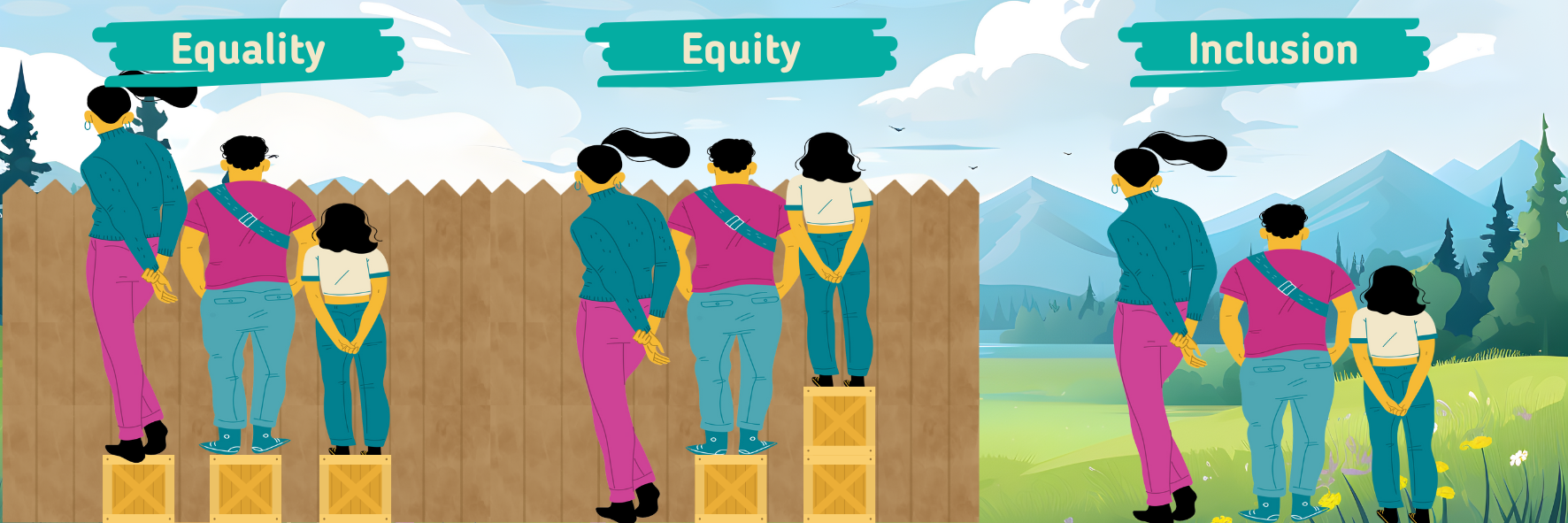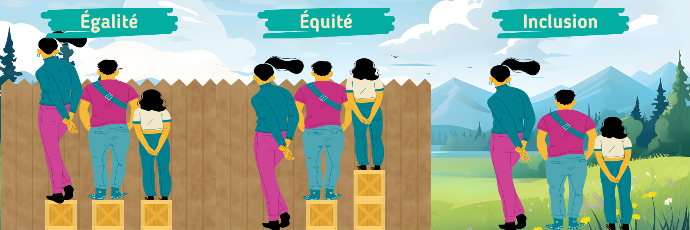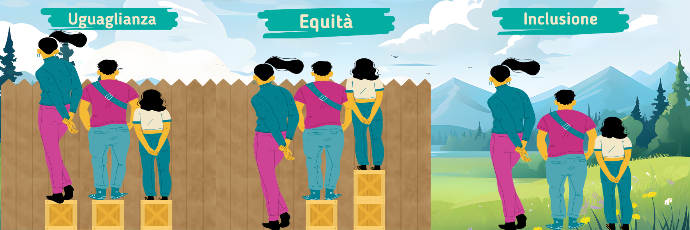From equality to inclusion
From equality to inclusion





Equality
Equality in education means treating everyone the same, giving everyone the same resources or treatment regardless of their starting point or needs. The school system ensures that all students can study in the same way, regardless of their social class or gender, which is a necessary, though not sufficient, condition for equal access to knowledge. It is important to differentiate between "equality of access" and "equality of opportunity." The continued influence of gender on the distribution of students across different fields of study shows that the education system does not ensure equality of opportunity for men and women.
Equity
Equity in education means assessing the extent of inequalities and addressing them where needed. These measures often involve providing personalized support to individuals disadvantaged by systemic barriers. In particular, this means combating gender discrimination. For instance, having identified that girls face barriers in pursuing STEM studies due to stereotypes, schools can propose STEM club for girls, invites female STEM professionals for talks, and offers coding workshops specifically tailored to encourage their participation and confidence. While such actions can enhance the girls participation in STEM fields, it does not directly address the systems of social relations that produce inequality.
Inclusion
Inclusion in education means fostering environments where every student feels valued, respected, and empowered to fully engage in all aspects of school life, regardless of their background or identity. Individuals remain different, but the context no longer creates inequality among them. A key approach to advancing inclusion in education is to tackle systemic barriers that disproportionately impact minority groups.
There are no comments for now.
